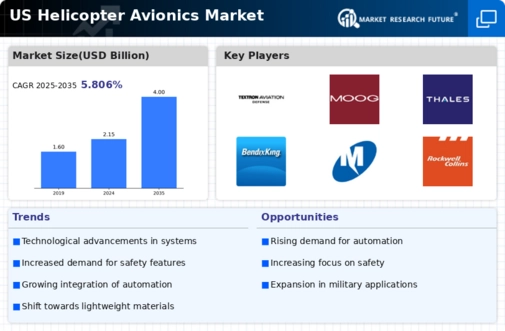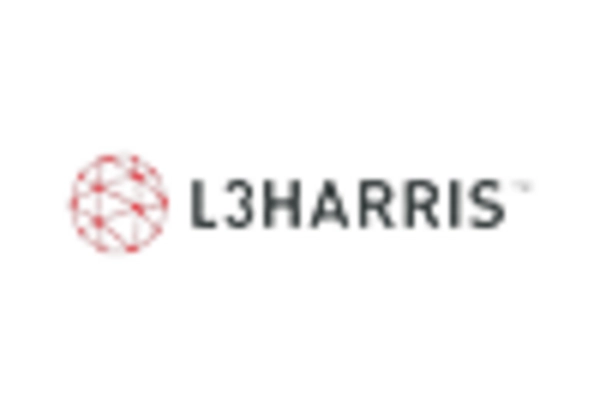Increased Demand for Safety Features
The helicopter avionics market is experiencing a notable surge in demand for enhanced safety features. Regulatory bodies in the US are increasingly emphasizing the need for advanced avionics systems that can improve situational awareness and reduce human error. This trend is driven by the growing number of helicopter operations in urban environments, where safety is paramount. As a result, manufacturers are investing in technologies such as terrain awareness and warning systems (TAWS) and automatic dependent surveillance-broadcast (ADS-B). The market for these safety features is projected to grow at a CAGR of approximately 7% over the next five years, indicating a robust opportunity for innovation in the helicopter avionics market.
Growth of Urban Air Mobility Solutions
This market is poised for growth due to the emergence of urban air mobility (UAM) solutions. As cities become more congested, there is a pressing need for innovative transportation solutions that can alleviate traffic. Helicopters equipped with advanced avionics are being considered for UAM applications, which require sophisticated navigation and communication systems to operate safely in urban environments. The US government is actively supporting initiatives to develop UAM infrastructure, which is expected to create new opportunities for avionics manufacturers. This segment of the market could see a growth rate of approximately 8% over the next few years, highlighting the potential for transformation in the helicopter avionics market.
Rising Demand for Military Applications
This market is significantly influenced by the rising demand for military applications. As defense budgets in the US continue to expand, there is an increasing focus on upgrading military helicopter avionics to enhance operational capabilities. Modern military helicopters require advanced avionics systems that support mission planning, threat detection, and communication. The US Department of Defense has allocated substantial funds for research and development in this area, which is likely to drive market growth. It is estimated that military applications could account for over 40% of the total market share in the coming years, underscoring the strategic importance of avionics in military operations.
Integration of Advanced Navigation Systems
The integration of advanced navigation systems is a key driver in the helicopter avionics market. With the increasing complexity of airspace and the need for precise navigation, there is a growing reliance on systems such as Global Navigation Satellite Systems (GNSS) and inertial navigation systems (INS). These technologies enhance flight safety and operational efficiency, particularly in challenging environments. The US market is witnessing a shift towards multi-sensor navigation systems that combine various technologies to provide redundancy and reliability. This trend is expected to contribute to a market growth rate of around 6% annually, reflecting the critical role of navigation in the helicopter avionics market.
Focus on Cost Efficiency and Operational Performance
Cost efficiency and operational performance are increasingly becoming focal points in the helicopter avionics market. Operators are seeking avionics solutions that not only enhance performance but also reduce operational costs. This trend is driven by the need for more efficient flight operations and maintenance practices. Advanced avionics systems can provide real-time data analytics, enabling operators to optimize flight paths and reduce fuel consumption. The US market is witnessing a shift towards integrated avionics solutions that offer cost-effective performance enhancements. It is anticipated that this focus on efficiency will contribute to a market growth rate of around 5% annually, reflecting the evolving priorities within the helicopter avionics market.

















Leave a Comment